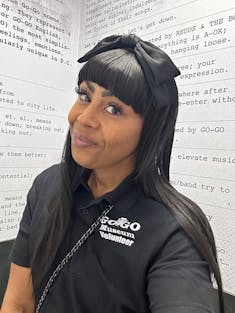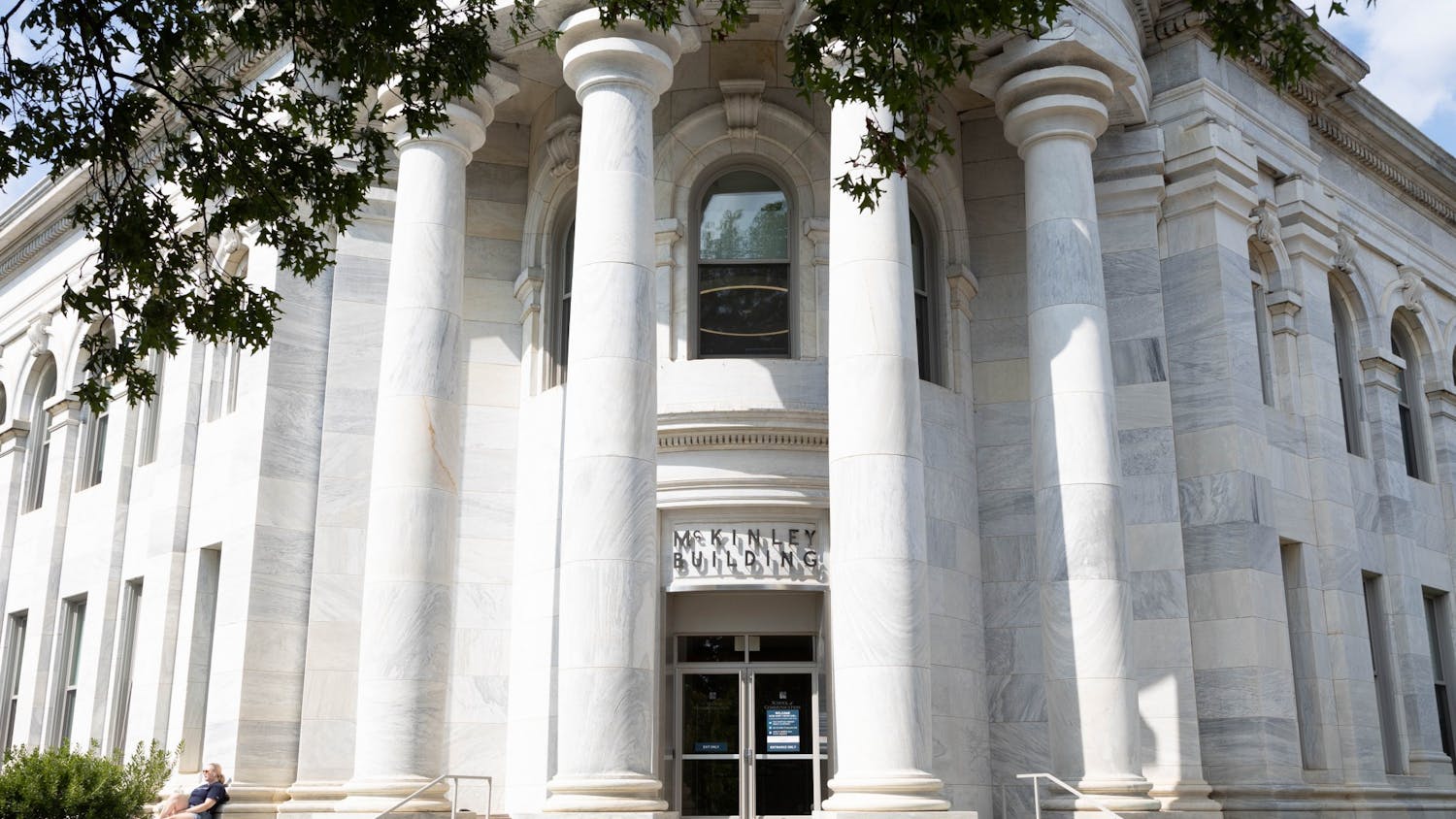The DC Public Library called it the “heartbeat of D.C.” Journalist Ta-Nehisi Coates called it “the official musical dialect of Chocolate City.” To D.C. natives, the consistent beat and funky sound of Go-Go music brings back memories of the 1970s, ‘80s and ‘90s — memories the new Go-Go Museum & Café is working to share with a new generation.
Community activist Ronald Moten, founding member of the BackYard Band Anwan Glover and School of Communication professor Natalie Hopkinson, led the museum’s physical site opening on Feb. 19.
“I’m still a little bit in disbelief that this is actually something that’s happened,” Hopkinson said. “It feels amazing.”

The Go-Go Museum’s staff each have unique relationships with the subgenre. Production assistant and ambassador Amy Allen first experienced Go-Go music live at 15 years old in the early 1990s — Junkyard Band was opening for Chuck Brown and the Soul Searchers in Landover, Maryland. Having grown up in Prince George’s County, Maryland, Allen recalls her past with Go-Go music in the D.C., Maryland and Virginia area.
“I am a fan, first and foremost,” Allen said. “I’ve either met many artists along the way, grew up with some or have captured their artistry from my lens, as a videographer.”
Chuck Brown, often called the “Godfather of Go-Go,” began performing with the Latin pop band Los Latinos in the early 1960s, but really found his groove and made his name in the music industry with the Soul Searchers in the 1970s. His music is still listened to today, and has been sampled in songs like Nelly’s 2002 hit “Hot in Here” and more.
Hopkinson joined the Go-Go Museum & Café leadership team in 2020 as chief curator in the wake of the Don’t Mute DC movement, which Hopkinson and Moten, founder and CEO of the museum, pioneered.
Hopkinson sparked her fascination with Go-Go music at her first job in journalism at The Washington Post, where she wrote an arts guide and also covered youth culture in her beat “Life Under 30.” She continued her interest at the University of Maryland and wrote her doctoral dissertation on Go-Go music in 2007, which later turned into a book titled “Go-Go Live: The Musical Life and Death of a Chocolate City” in 2012.
“It’s not just the music,” Hopkinson said. “It’s a whole culture, a whole world of Go-Go. I got pretty obsessed with it.”
Go-Go music has been suppressed and criticized in the past, raising further concern for the local communities affected by gentrification within D.C. neighborhoods. The Don’t Mute DC movement began in April 2019 when those in a nearby luxury apartment complex raised complaints about a Go-Go performance in Shaw.
This is a familiar story for longtime Go-Go fans. Policymakers attempted to suppress Go-Go’s popularity and presence in the District by creating curfews for youth in the late 1980s sparked from the “rowdiness and occasional violence” that supposedly was associated with Go-Go music at the time, according to a 1987 article by The Washington Post. This was contested by teenagers and club owners of the time, given that Go-Go venues opened late and were most active past midnight.
“There was no violence or aggressiveness,” Allen said. “Just pure energy and a party vibe from the Go-Go perspective.”
Don’t Mute D.C. and the celebration of the city’s Go-Go music history is a small part of the conversation around gentrification in the District. More than 20,000 Black Washingtonians were displaced from gentrification from 2000 to 2013, according to the National Community Reinvestment Coalition.
The location of the Go-Go Museum & Café was no coincidence — the leadership team purposefully decided to build the museum in southeast D.C.’s historic downtown Anacostia. They recognized its deep roots to the Piscataway Conoy Tribe and the majority-Black community that actively lives in the neighborhood.
This relationship to the land was discussed in a private event hosted by the museum on Feb. 22, titled “Hail to the Anacostans,” where three panelists were invited to speak about the first people to inhabit the land where the museum stands.
Jessi Swann, a member of the Piscataway Conoy Tribe and folklorist Camila Bryce-Laporte spoke about their respective relationships to the District’s land, and author of “Native American History of Washington D.C.” Armand Lione spoke about the history of the land.
The museum plans to host more panels and events throughout the year, with “Ladies to the Front: The Impact of Women in Go-Go” coming up in March.

The very first students to visit the museum were from the University, as Hopkinson brought two of her music-themed classes to tour in early November 2024, before the museum’s official opening the following week. All schools can book tours of the museum through the website.
“This is an indigenous culture that grew out of this space,” Hopkinson said. “Go-Go is an expression of all the things that have happened here in D.C., and I hope that they are able to appreciate that.”
Entry to the museum is free for D.C. residents, though a $10 donation is suggested. Non-D.C. residents require a $15 admission fee. Hour-long self-guided tours are offered Wednesdays and Saturdays from 10 a.m. to 4 p.m.
Guided tours are also available by appointment, offered every weekday aside from Wednesday, from 10 a.m. to 4 p.m. Tours are priced at $20 per person, for groups of 10-50 people.
“Black people have taken their pain and turned it into power over time,” Hopkinson said. “Their history, their culture, traditions, music and spirituality have been the things that sustained us, across time and space.”
This article was edited by Abigail Hatting, Maya Cederlund, Tyler Davis and Abigail Turner. Copy editing done by Olivia Citarella, Hannah Langenfeld and Sabine Kanter-Huchting.





